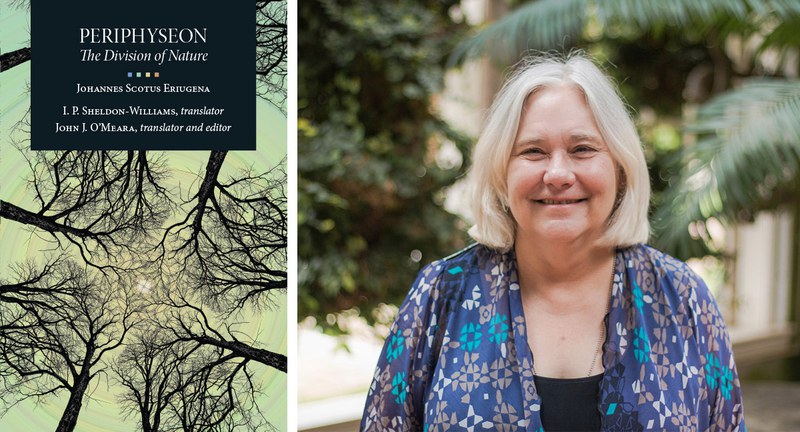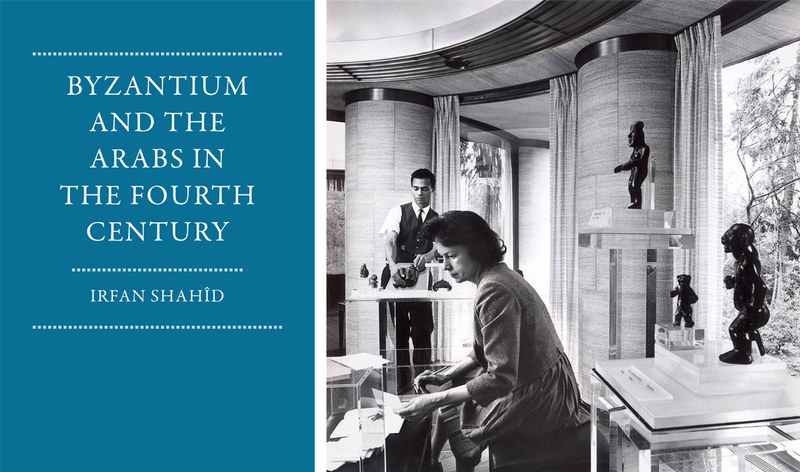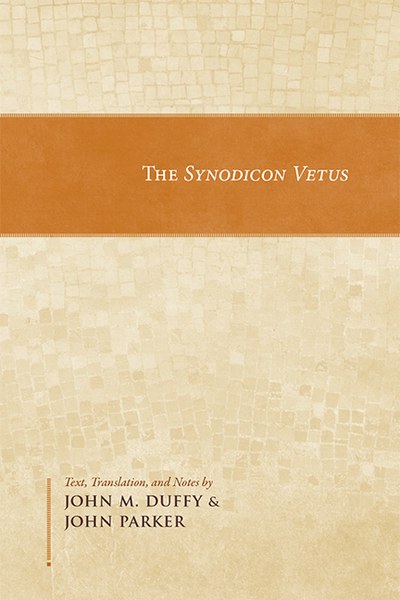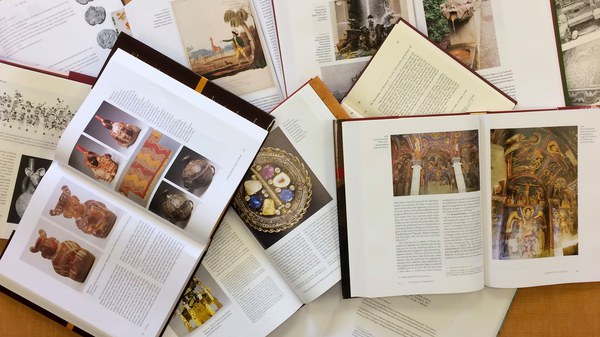By Julia Ostmann
Curious about what happens at Dumbarton Oaks when the museum closes and the garden gates lock? Recently relaunched series “Behind the Scenes” uncovers the hidden activities, surprising jobs, and remarkable discoveries that make a home of the humanities.
Born in Ireland in the ninth century, the monk Eriugena wrote philosophy so controversial that it was condemned by papal bull—yet captivated mystics and scholars for more than a thousand years. In recent decades, the English translation of Eriugena’s great work Periphyseon languished out of print after its original publisher folded.
Under the auspices of a two-year-old project at Dumbarton Oaks to make classic translations and scholarship more widely accessible, the Periphyseon is now available in English for the first time in many years. It joins five other newly released titles, all important works in Byzantine studies.
“The classic books we’re reprinting are standards in the field, and they can spark people to take a new approach to old scholarship,” says Kathleen Sparkes, director of publications. “These books are sometimes used as textbooks, and the bibliographies, data, and information in them are very valuable.”

Republishing the Classics
Sparkes got the idea to republish seminal titles in the fall of 2017. After researching possible delivery methods and vendors, she settled on printing books as the customer ordered them, rather than publishing many copies in advance—a cost-effective way to make older works available once again. A plan emerged: release classic books as free downloads from the Dumbarton Oaks website and on books.doaks.org, a newly created portal for inexpensive paperbacks.
First up for release in early 2018: Irfan Shahîd‘s groundbreaking seven-volume Byzantium and the Arabs. If there is virtue to his work, Shahîd once said, “it will be because I’ll be the first historian to have filled the gap of all these centuries with my gaze fixed on the seventh to know exactly what happened and why it happened the way it did.” Available as individual volumes or at a discount as a complete set, the books cover the relationship between the Arabs and the Eastern Roman Empire from 64 BCE to the advent of Islam.
“Other people have written about it, but not to the extent and depth that he did,” says Sparkes. “Quite a few people depend on that book for their scholarship.” Byzantium and the Arabs has been the top seller among rereleased books.
Which titles would appear next? Sparkes and Digital Content Manager Lain Wilson pored through the backlist—books published more than five years ago—looking for candidates. They considered requests made online and consulted scholarly program directors and librarians at Dumbarton Oaks. They had to avoid works with tricky image permissions. Above all, Sparkes and Wilson asked themselves what scholars would find useful.

Thirty-four titles are now available on books.doaks.org, including three edited volumes by renowned Pre-Columbian art historian Elizabeth P. Benson and the Dumbarton Oaks Texts, critical editions with facing-page translation, introduction, and notes or commentary from the Washington series of the international Corpus Fontium Historiae Byzantinae.
“The edited volumes and monographs are by some of the top scholars in their fields, revealing how major thinkers have looked at different topics that may not be covered frequently or in such detail elsewhere,” says Sparkes.
New Books—and New Ways to Access Them
This May, six classic works of Byzantine studies debuted for the second time. Besides the Periphyseon, they include Russian Travelers to Constantinople in the Fourteenth and Fifteenth Centuries by George P. Majeska and The Synodicon Vetus, translated by John M. Duffy and John Parker, an unusual document of church history that has frequently raised readers’ eyebrows.
A landmark work by Alexander Kazhdan and Giles Constable, People and Power in Byzantium: An Introduction to Modern Byzantine Studies appeals to non-specialists as well as to Byzantine scholars. Sabas, Leader of Palestinian Monasticism: A Comparative Study in Eastern Monasticism, Fourth to Seventh Centuries by Joseph Patrich and Private Religious Foundations in the Byzantine Empire by John Philip Thomas round out the new offerings.

Several of these titles can also be downloaded for free as PDFs, joining close to 100 foundational Dumbarton Oaks texts made freely available online. Some books are most useful as searchable documents, where scholars can track key words, copy text, and easily scroll through images. Free downloads also remove financial barriers to important reference works. For example, catalogues of Dumbarton Oaks’ Byzantine coins and seals—a collection nearly 30,000 strong, one of the most comprehensive in the world—cost hundreds of dollars in hardcover. “To be able to download them and search digitally is just a huge benefit to scholars,” says Sparkes.
Other free PDFs include Shahîd‘s Byzantium and the Arabs and 35 volumes of the Studies in Pre-Columbian Art and Archaeology, which collectively have been downloaded more than 3,000 times—a sign of great interest for older and specialized scholarly titles. Byzantine Monastic Foundation Documents and The Economic History of Byzantium are two other popular downloads. “I always knew they were important works, but seeing how much they are downloaded drives home how fundamental they are and how they have anchored Byzantine studies as a discipline,” says Wilson.
In total, Dumbarton Oaks books have been downloaded 33,522 times and counting. For economic reasons, very few scholarly publishers can afford to make so many titles fully open access. “We’ve been really lucky to make this part of our mission to serve scholars,” says Sparkes. “We can say, please take these volumes and use them in your scholarship—this is what we’re here for. That makes me very happy. It’s one of the reasons I got into scholarly publishing in the first place.”
Another accessibility tool is the coupon program. “We want people who would like to purchase these books to be able to afford them, or afford to buy an extra book if they want,” says Wilson. Frequent coupons enable readers to obtain volumes at a fraction of what they would have cost in original hardcover.
Since 1941, Dumbarton Oaks has published hundreds of books, and Sparkes hopes to make the vast majority of the backlist available in paperback, for free download, or both. Volumes coming soon include the earliest Dumbarton Oaks museum catalogues, with images and information that cannot be accessed anywhere else. Sparkes encourages anyone wanting a reprint of a Dumbarton Oaks title, whether in paperback or PDF, to make a request.
Julia Ostmann is postgraduate writing and reporting fellow at Dumbarton Oaks.

